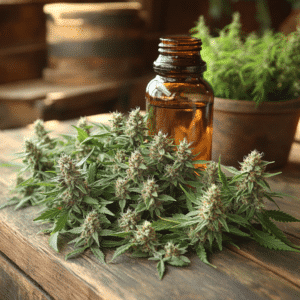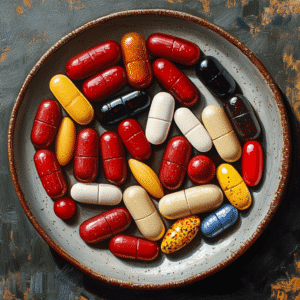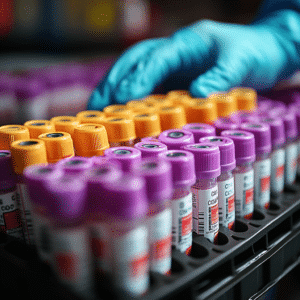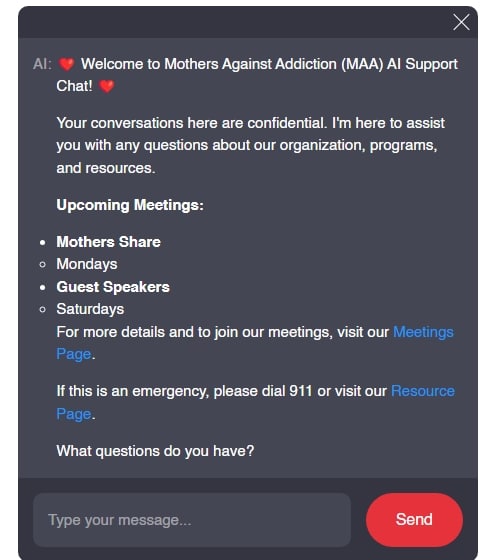Addiction is a profound challenge, steeped in misunderstanding and myths that often paint a one-dimensional picture. When we dive deep into the risk factors surrounding addiction, however, we uncover a more nuanced narrative. This understanding is vital because these risk factors can significantly shape a child’s path towards—or away from—substance use. By shining a light on these influences, we empower families to take action sooner and seek the appropriate support.

Understanding Risk Factors in Addiction
The truth is, addiction doesn’t have a single cause. It’s influenced by an intricate web of risk factors that can manifest in various aspects of life: genetic, mental health, environmental, and more. When families become aware of these risk factors, they can foster healthier environments and communications, ultimately steering their loved ones away from addiction. This is especially critical for parents feeling helpless, longing for ways to connect and support their struggling children.
At Mothers Against Addiction, we know that understanding these dynamics not only provides clarity but also generates hope and resilience. We aim to be the light in the dark, offering guidance and nurturing relationships for those facing the emotional upheaval that addiction brings.

Top 7 Risk Factors Influencing Addiction
1. Genetic Predisposition
Believe it or not, genetics could put someone at risk for addiction even before they take their first drink or drug. Research indicates that as much as 50% of an individual’s propensity for addiction may stem from inherited traits. The DRD2 gene has garnered attention particularly; those with certain variations may find it harder to manage their cravings. Understanding this can be a game changer. It opens the door to early intervention strategies that families can discuss with healthcare providers.
2. Mental Health Disorders
If you’ve ever heard someone say, “Sometimes, you drink to forget,” there’s a distressing truth behind those words. Mental health disorders—including anxiety, depression, and PTSD—often co-exist with substance use issues. For veterans battling PTSD, alcohol can become a quick way to cope. In fact, studies highlight that about 30% of Vietnam veterans with PTSD also experience substance misuse. Recognizing this connection can lay the groundwork for comprehensive treatment that includes mental health support alongside addiction recovery.
3. Adverse Childhood Experiences (ACEs)
Did you know that how a child experiences their early years can follow them well into adulthood? Experiences such as neglect, abuse, and chaotic family environments, known as ACEs, can have an overwhelming impact on emotional and social development. The CDC reports that individuals encountering four or more ACEs are significantly more likely to develop substance use disorders later in life. Schools and communities prioritizing trauma-informed care can grow into sanctuaries of healing, helping children navigate their past while finding paths toward brighter futures.
4. Environmental Influences
Your surroundings can create a crucial backdrop for the choices you make. Living in areas with high substance availability naturally ramps up the opportunity for addiction. For example, communities in Hershey, Pennsylvania may offer resources for health and wellness, creating a bulwark against addiction. Conversely, neighborhoods plagued by drugs can steep youth in an environment where substance use feels normalized. Instead, let’s invest in neighborhoods that prioritize health, providing strong community ties that can act as protective factors against addiction.
5. Socioeconomic Status
Financial strain can seep into many aspects of life, including substance use. Numerous studies tie lower socioeconomic status (SES) to higher rates of addiction. Without access to educational opportunities or mental health services, young people may find themselves trapped in cycles of substance use. However, when programs focused on improving SES—like job training or community colleges—thrive, individuals can break free from these chains and rise above the adverse effects of addiction.
6. Peer Influence
For youth, friendships can shape choices significantly. The desire to fit in can lead to substance use, especially if their buddies are leading the way. Studies have shown that adolescents who hang out with Peers who drink or smoke are more likely to engage in these behaviors themselves. So, how do we counter this? Communities cultivating positive friendships through mentorships—like those seen in youth programs—can provide critical support that helps steer kids away from addiction.
7. Availability of Substances
Last but not least, the availability of substances stands as a significant risk factor for addiction. More accessible drugs means higher chances for use and potential addiction. In states that have legalized marijuana, usage rates have fluctuated, leaving health professionals and communities in a bind. Clear regulations and proactive community sobriety initiatives can create boundaries that safeguard vulnerable individuals. It’s essential to advocate for policies that protect our youth and establish norms around a drug-free lifestyle.
Protective Factors That Counteract Addiction
While risk factors pose challenges, it’s vital to remember that numerous protective factors exist to help mitigate these risks. Strong family connections, involvement in community activities, and access to supportive resources can create an environment that promotes resilience. By nurturing these protective factors, families can build a buffer against the pull of addiction, shaping healthier futures for their children.
For instance, programs encouraging parental engagement in youth activities have demonstrated positive impacts in communities across the board. When parents are involved, children feel seen and supported, drastically lowering the chances of turning to substances. So let’s lean into these protective factors and foster a loving environment for all vulnerable souls.
Innovative Interventions in Addiction Prevention
As we sift through the patches of risk and protective factors, it’s clear that innovative strategies can reshape the landscape of addiction prevention. New mobile apps, like “Sober Grid,” provide vital support through social connections that uplift those in recovery. Schools incorporating social-emotional learning curricula are addressing emotional regulation, aiming to bolster resilience among at-risk youth.
Programs that tap into technology and community networks can create a safety net for those wrestling with addiction. By targeting at-risk individuals at the basic level, we can alleviate some of the burdens that addiction has laid bare, providing families the resources needed to reclaim their hope.
Understanding the factors surrounding addiction isn’t just about identifying problems; it’s about fostering solutions and empowering families. At Mothers Against Addiction, we strive to pave the way towards recovery, offering guidance and support to those navigating this difficult journey. Let’s come together as a community, shine a light on shared struggles, and prioritize compassion and resilience for the future. Together, we possess the strength to reshape the narrative of addiction and foster a society where hope thrives.
Risk Factor: Understanding What Could Change Everything About Addiction
The Influence of Environment
When it comes to addiction, the risk factor of environment can’t be overlooked. Did you know that living in a community with limited access to support and resources increases one’s vulnerability? For instance, in places like Hershey, Pennsylvania, where community ties might lack the strong support networks found elsewhere, individuals could face greater risks. These environments can foster isolation, making addiction feel overwhelming. Speaking of community, another interesting aspect is the role that cultural elements play; check out the impact of popular culture, such as the rise of 90s black Movies that frequently touched upon social issues, including addiction, and how they shaped conversations.
Genetics and Family History
Genetic factors also play a significant role in addiction. Studies show that individuals with a family history of addiction have a higher risk factor for developing their own issues. This genetic predisposition isn’t merely an individual battle; it webs itself into family dynamics. As alarming as it might sound, one out of every four children with a parent struggling with addiction is at risk themselves. It’s worth noting that this doesn’t mean destiny; with support and intervention, change is achievable, and organizations like those led by figures such as Scott F Mcafee are here to help navigate these waters.
Mental Health Connection
Now, let’s chat about mental health. This is a risk factor that’s often intertwined with addiction. Conditions like the mental disorder Of personal entitlement can create barriers, making it harder for individuals to seek help. Moreover, the rise of synthetic drugs like fentanyl poses exciting yet tragic shifts in prevention efforts. With alarming statistics and stories about fentanyl spreading like wildfire through communities, understanding its dangers is imperative. The bottom line? From actors who publicly share their own struggles, like The Flash actor, to the pressing reality in places such as Stourport on Severn, awareness and education can pivot the conversation around addiction from one of shame to one of healing. With the right resources, families can combat the risk factors that put their loved ones at risk, steering them towards a brighter future.





























